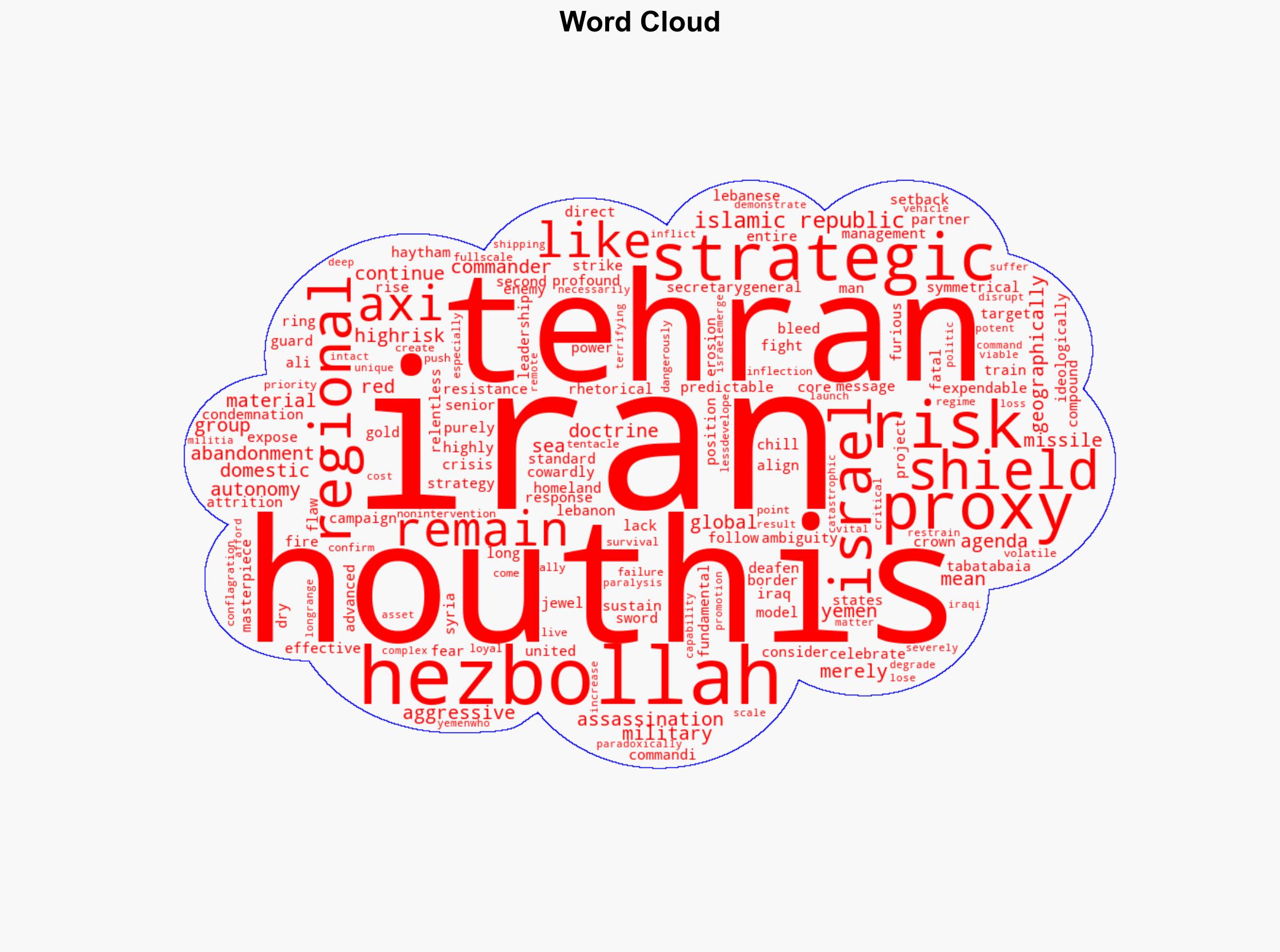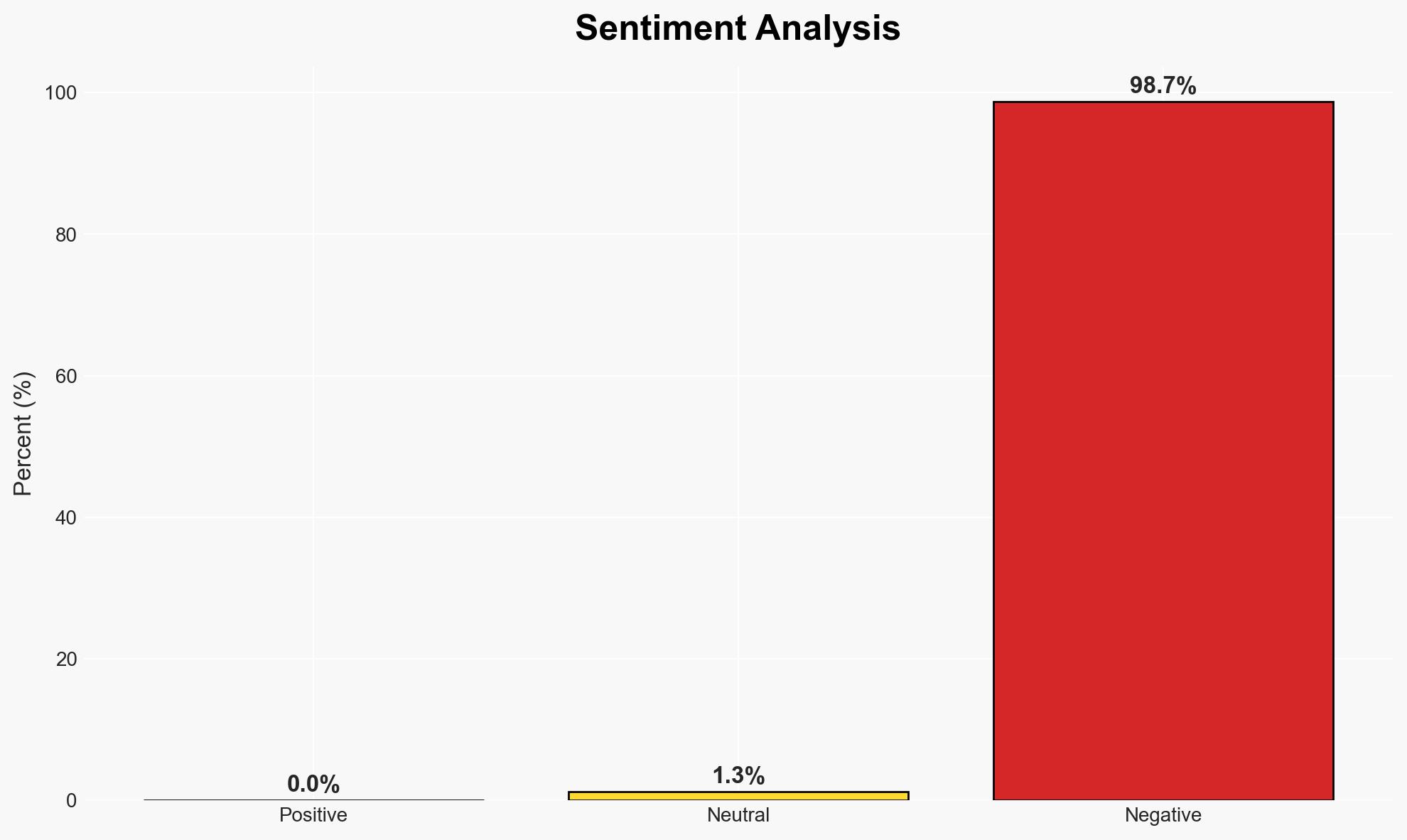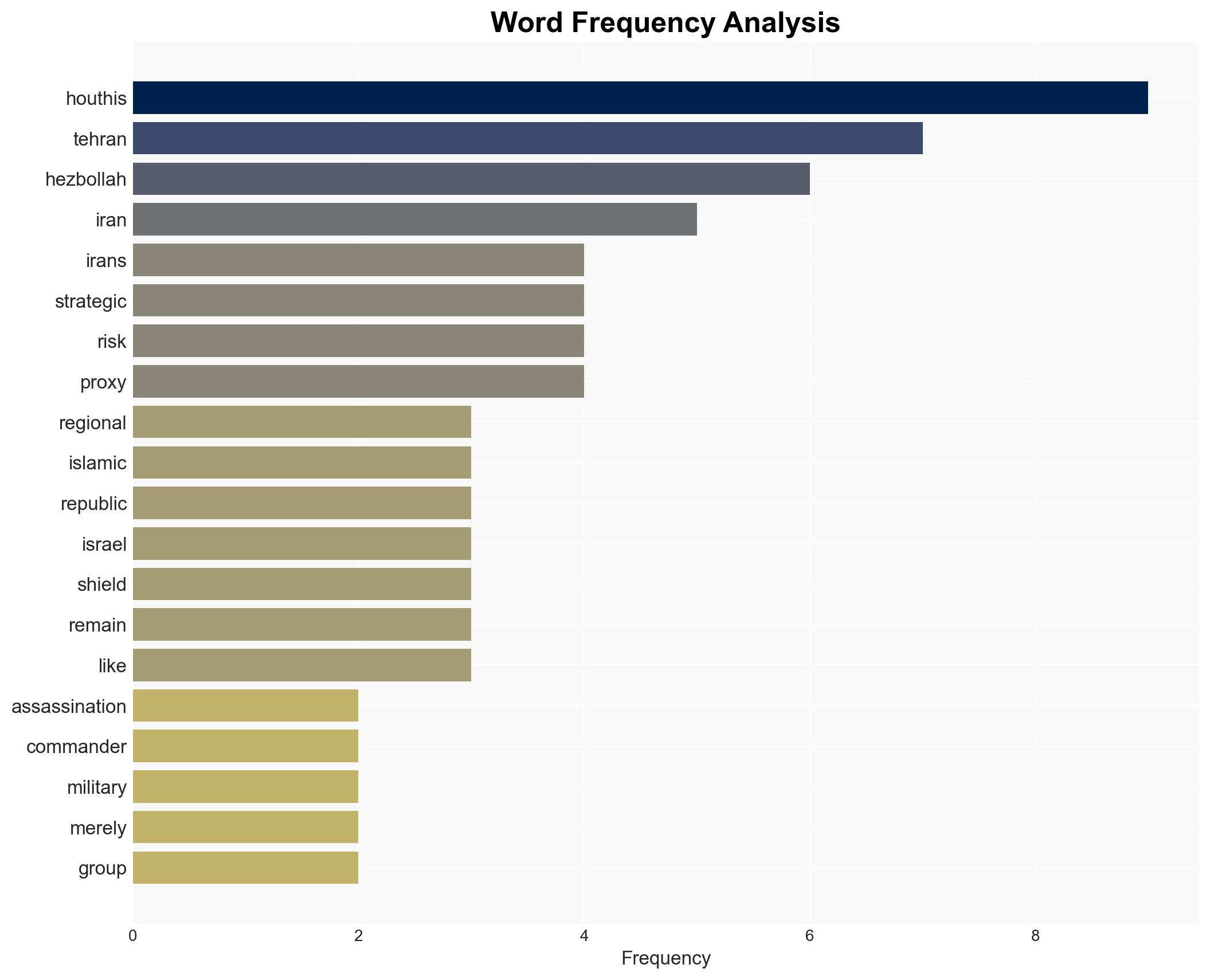Houthi Threat Intensifies as Iran’s Proxy Strategy Faces Critical Challenges Amid Regional Turmoil
Published on: 2025-11-26
AI-powered OSINT brief from verified open sources. Automated NLP signal extraction with human verification. See our Methodology and Why WorldWideWatchers.
Intelligence Report: Beware the Houthi Paradox Iran’s silent surrender makes its last proxy more dangerous
1. BLUF (Bottom Line Up Front)
The assassination of a senior Hezbollah commander has exposed vulnerabilities in Iran’s regional strategy, potentially increasing the strategic autonomy and aggression of the Houthis in Yemen. This development could lead to heightened regional instability, particularly affecting Israel and global shipping routes. Overall, there is moderate confidence in the assessment that Iran’s restraint may inadvertently empower the Houthis as a more independent and aggressive proxy.
2. Competing Hypotheses
- Hypothesis A: Iran’s lack of direct retaliation for the Hezbollah commander’s assassination indicates a strategic shift towards prioritizing regime survival over proxy engagement. This is supported by Iran’s non-intervention and the erosion of its traditional proxy model. However, it is uncertain if this restraint is a temporary tactical decision or a long-term strategic pivot.
- Hypothesis B: Iran’s restraint is a calculated move to allow the Houthis greater autonomy, thereby increasing their operational effectiveness and unpredictability against shared adversaries like Israel. This is supported by increased material support to the Houthis and their demonstrated capabilities. Contradicting this is the risk that increased autonomy could lead to actions beyond Tehran’s control.
- Assessment: Hypothesis B is currently better supported due to evidence of increased support to the Houthis and their strategic positioning. Key indicators that could shift this judgment include any direct Iranian military engagement or significant changes in Houthi operational patterns.
3. Key Assumptions and Red Flags
- Assumptions: Iran prioritizes regime survival over regional proxy engagements; Houthis maintain operational independence; Iran’s strategic ambiguity is intentional.
- Information Gaps: Detailed intelligence on Iran’s internal decision-making processes and future strategic objectives; real-time Houthi operational plans.
- Bias & Deception Risks: Potential source bias from Iranian or Houthi communications; risk of overestimating Houthi independence due to lack of direct Iranian oversight.
4. Implications and Strategic Risks
This development could lead to increased regional instability as the Houthis may act more aggressively, potentially provoking Israeli or Saudi responses. The strategic ambiguity of Iran’s position may embolden other proxies to act independently, complicating regional security dynamics.
- Political / Geopolitical: Potential for escalated tensions between Iran, Israel, and Saudi Arabia; shifts in regional alliances.
- Security / Counter-Terrorism: Increased risk of asymmetric warfare and proxy conflicts in the Middle East.
- Cyber / Information Space: Potential for increased cyber operations as proxies seek to disrupt adversaries’ capabilities.
- Economic / Social: Disruptions to global shipping routes through the Red Sea; potential economic strain on regional actors due to increased military expenditures.
5. Recommendations and Outlook
- Immediate Actions (0–30 days): Increase monitoring of Houthi activities and Iranian communications; engage with regional allies to assess threat levels.
- Medium-Term Posture (1–12 months): Strengthen regional partnerships and intelligence-sharing frameworks; develop contingency plans for potential Houthi escalations.
- Scenario Outlook:
- Best: Iran reasserts control over proxies, reducing regional tensions.
- Worst: Houthi actions provoke a broader conflict involving Israel and Saudi Arabia.
- Most-Likely: Continued low-intensity conflicts with periodic escalations.
6. Key Individuals and Entities
- Haytham Ali Tabatabaia (Assassinated Hezbollah commander)
- Hezbollah (Lebanese militant group)
- Houthis (Yemeni militant group)
- Islamic Republic of Iran (State actor)
7. Thematic Tags
Structured Analytic Techniques Applied
- ACH 2.0: Reconstruct likely threat actor intentions via hypothesis testing and structured refutation.
- Indicators Development: Track radicalization signals and propaganda patterns to anticipate operational planning.
- Narrative Pattern Analysis: Analyze spread/adaptation of ideological narratives for recruitment/incitement signals.
Explore more:
Counter-Terrorism Briefs ·
Daily Summary ·
Support us





